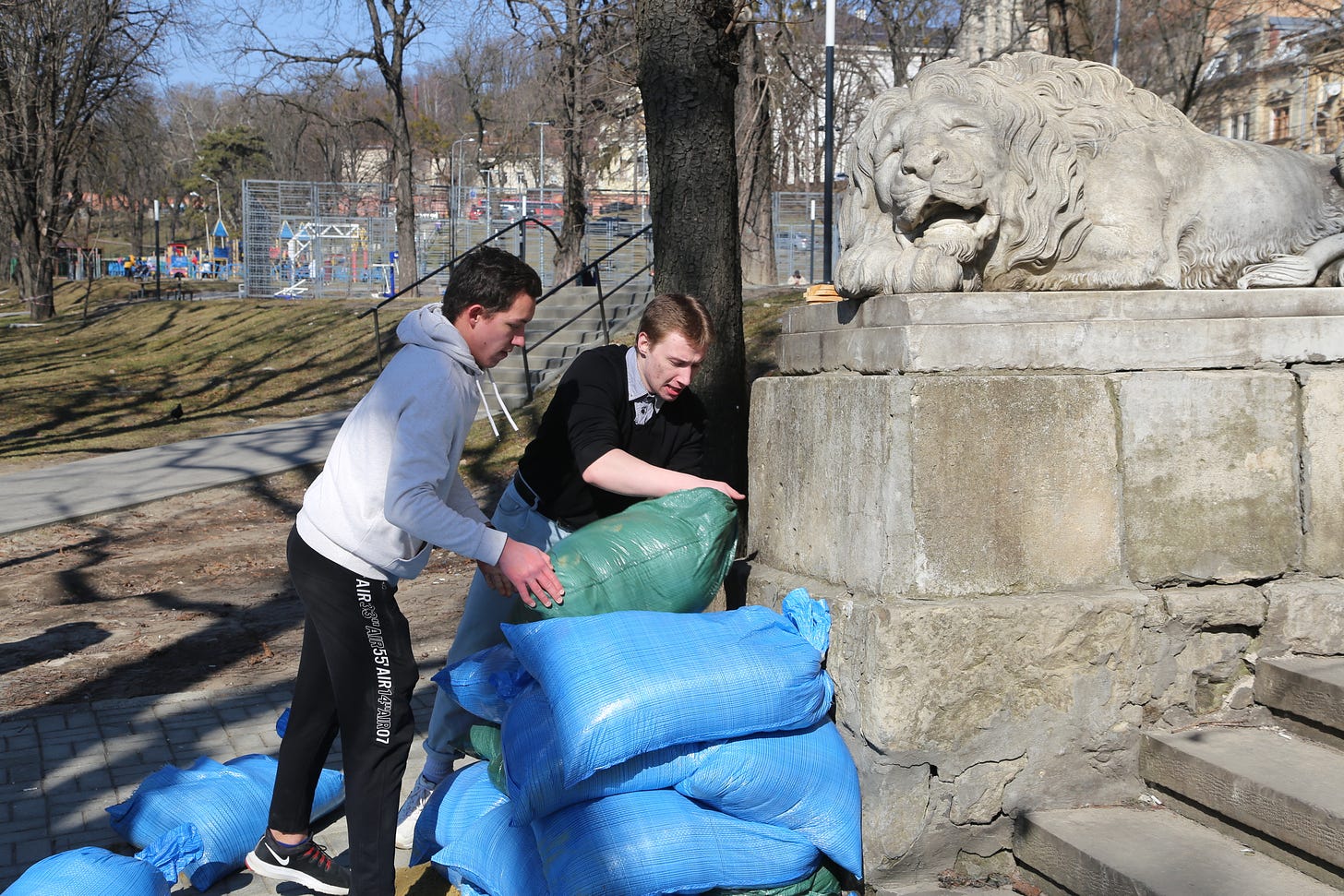War is an act of violence pushed to its utmost bounds.
Carl Von Clausewitz, On War
Wikipedia defines total war as ‘warfare that includes any and all civilian-associated resources and infrastructure as legitimate military targets, mobilizes all of the resources of society to fight the war, and gives priority to warfare over non-combatant needs.’
More ominously, the OED defines total war as ‘war that is unrestricted in terms of the weapons used, the territory or combatants involved, or the objectives pursued, especially one in which the laws of war are disregarded.’
While the definitions fixate on the offensive weaponry and strategy used, the definition fails to capture the all-consuming impact of total war on the target population. Among the many striking impressions I had in my recent travels into wartime Ukraine was how completely Ukrainian society, even in the relatively safe Western areas of the country, had dedicated itself to the sole cause of repelling the Russian invasion. Normal society ground to a halt as everyone either fought, supported fighters, contributed essential inputs to the war like food, medications or war material itself, or housed refugees and aided their flight from the war zone.

With air raid sirens tolling several times a day, everyone was a potential casualty and everyone a potential gear in the national war machine; nobody talked about anything but the war, and everyone doom-scrolled Telegram all day as they sought the latest morsel of news from the front lines in Kyiv or one of the besieged hellscapes like Mariupol. The patriotic rallying cry of Слава Україні! (‘Glory to Ukraine!’) and its reply Героям слава! (‘Glory to the heroes!’) was repeated everywhere from ministers’ speeches to the everyday traffic of life, even as a greeting on a phone call. It was collective war fever—a necessary adaptation to an existential conflict, to be clear—on a scale that has to be seen to be believed.
This is what a nation turns into under conditions of total war: a population of soldiers, fixers, scroungers, volunteers and refugees scrambling between noisy bouts of air-raid sirens, motivating themselves via an increasingly hard-edged culture of nationalism and self-sacrifice … until either victory or destruction.
On a sunny Sunday in Lviv, what looked like your typical group of high-school kids who’d normally be carousing in some group activity like sports, were instead busily shoveling sand into bags. They would then (two at a time, for the bags were heavy) arrange them neatly around two historic lion statues in a public square. There was much joshing and chitchat in what almost seemed like a fun activity; every once in a while, the organizer would read from her Telegram the latest news on the war. ‘Czechia promises more aid to Ukraine!’ which would be greeted with cheers and invocations of ‘Слава Україні!’ It was rousing to see the national unity; it also reminded me of the young high schoolers similarly taken with war fever (yet innocent of war itself) in the opening chapter of All Quiet On The Western Front.

Source link
Author Antonio García Martínez





